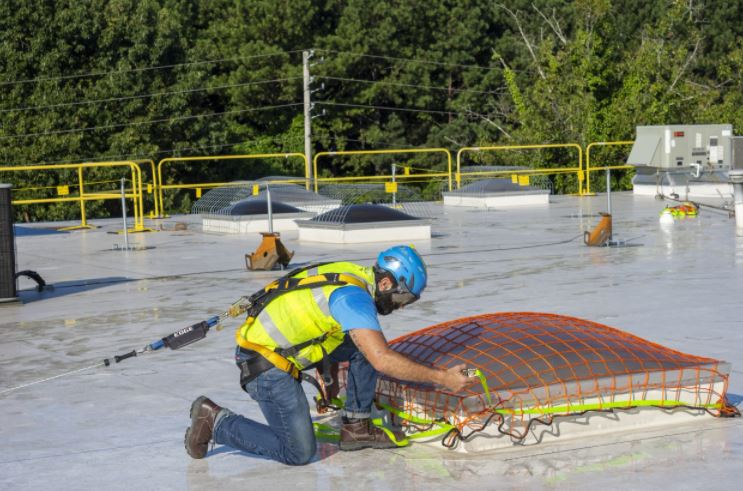 No job is completely safe. This especially holds true for construction workers, with this occupation having a high number of work-related accidents per year. In fact, OSHA reported that employee falls account for the highest number of fatal construction injuries. Due to the prevalence of accidents and safety concerns, corporations have to provide fall protection on the worksite.
No job is completely safe. This especially holds true for construction workers, with this occupation having a high number of work-related accidents per year. In fact, OSHA reported that employee falls account for the highest number of fatal construction injuries. Due to the prevalence of accidents and safety concerns, corporations have to provide fall protection on the worksite.
Corporations have to employ various safety standards and protective measures to reduce the risk of accidents and fatal accidents on the job. There are different levels of fall protection used at job sites, with employers ultimately making the final decision as to what methods they will use to keep their employees safe.
What is passive fall protection?
There is a major difference when looking at the characteristics of active versus passive fall protection. A passive fall protection system uses protective measures that are unmoving, fixed, or solely in one place to protect a worker or employee from an accident.
There is no dynamic movement or human interaction with the system with a passive fall protection safety system. The only human interaction is the initial setup and installation of the passive safety piece – after this, there is no need for any further contact.
A passive fall protection method is the second line of defense against a fall. When comparing active versus passive safety systems, passive methods are usually used as a ‘last resort option. Commonly used passive protection systems are fixed items like guardrails, netting, and barricades.
What is active fall protection?
Active fall protection is a movable safety system involving workers’ involvement and typically includes special gearing to operate correctly. These safety systems often involve using a body harness, anchor, safety line, or connectors to keep the workers safe on the job site. Although there are different variations of active fall protection measures, all systems use the aforementioned parts.
When comparing active versus passive fall protection, active protection requires various prerequisites to utilize this safety process effectively.
Proper training for all employees
The first, and arguably most important, the step of active fall protection is proper training. Untrained or unauthorized people in charge of a worksite should not be allowed to use active fall safety. Before using active fall protection, it is highly recommended that the company’s employees go through a rescue procedure in the event of a fall.
Use fall protection equipment
The difference between active versus passive fall protection is the use of specialized equipment. Active safety systems use different types of machinery to keep their workers safe, like self-retracting lines and shock-absorbing fall lines.
Check equipment for efficiency
In addition, workers need to thoroughly check every piece of equipment on the worksite to make sure they are up to safety regulations. By regularly servicing machines on the worksite, employees ensure active fall protection is in place.
Conclusion
When comparing active versus passive safety systems on the worksite, one should look at passive safety measures as the second-line of defense and the last resort if something goes wrong. Active fall protection is crucial in keeping every worker safe and reducing fatal accidents on construction sites.




